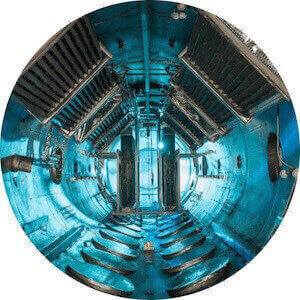Before starting, a message to the Cardano cult:
As investors, it's important to note that our core objective is to generate profit through the markets. Hence, one should avoid developing cult-like devotion to a project, and try to always analyse projects through an unbiased lens.
Before delving into the specific concerns surrounding Cardano, it's essential to discuss some fundamental concepts. One key principle is the software lifecycle, a process that ensures the development of a reliable, secure, and robust product. All successful modern applications and dApps go through this cycle to meet high standards of quality.
The cycle is as follows:
Empathize, define, ideate, prototype, test and finally iterate. This is how developers take an idea and turn it into a real-world product.
The Software Lifecycle
In order to build high-quality software, it is essential to continuously release updates and optimize the user experience through ongoing development. It can be difficult to predict how users will interact with a specific product or network, so it is important to adopt an agile approach that allows for adaptability and flexibility in response to changing user needs and requirements. In contrast, the waterfall method involves predetermined user requirements and a fixed development path with minimal deviation.
When considering the most efficient method for a highly adaptable and versatile platform such as a dApp ecosystem, it is reasonable to conclude that an agile approach would be most effective.
Moreover, understanding the concept of risk and reward is crucial. Essentially, risk and reward can be described as the level of risk associated with a potential reward. Generally, the higher the risk, the lower the value of the reward, and therefore, if the risk is too great, it may be wise to abstain from the trade or investment.
It is worth noting that as of today, Cardano has a market capitalization of approximately $9.5 billion. Despite barely having any adoption after years of development, it is important to consider whether Cardano has further potential for growth and whether it will be able to compete with other rapidly growing dApp platforms.
As previously mentioned, Cardano has been in development for years. Further, it is evident that the project has experienced significant scope creep, resulting in challenges in updating the underlying software architecture to support modern dApps and dApp development. This difficulty may be attributed to the project's lack of agile software development methodologies, which prioritize adaptability to meet evolving user needs.
Now, let's delve into the root cause of the issues surrounding Cardano. The blockchain utilizes a UTXO (Unspent Transaction Output) model, which utilizes a distinct programming paradigm for dApps compared to account-based blockchains such as Ethereum or Solana. The UTXO model is a verification model. This means network users submit transactions that specify the results of the state transition, defined as new transaction outputs spendable by the recipient. Nodes are then responsible for verifying if the consumed inputs are unspent and if the signature satisfies the defined spending conditions.
A database is utilized to track and store changes made through cryptocurrency transactions. As the volume of transactions increases, the database becomes populated with records of the alterations generated through the transactions. Once all transactions are finalized, any remaining outputs are saved in the database and can be utilized for future transactions.
Cardano utilizes a variant of the UTXO model known as eUTXO, which offers enhanced security, fee predictability, and higher levels of parallelization compared to the traditional UTXO model.
In contrast, the account model is based on computation. In this model, users provide transactions with instructions for nodes on how state transitions should appear. The network then calculates the new state based on the given instructions.
It is evident that the account model is the superior choice for constructing a smart contract platform due to its ability to handle complex logic and efficient memory usage. Transactions utilizing the account model only require the sender, receiver, transfer amount, and a digital signature, allowing for more intuitive development of transactions involving multiple parties or state information.
The account model also allows for the implementation of advanced use cases, such as flash loans, which cannot be executed on the UTXO model. This superiority was demonstrated when the UTXO model proved inadequate for building an automated market maker exchange, as seen with one of Cardano's first decentralized exchanges.
Users in real-time discover the limitations of the UTXO model
Many people were quick to point out that this was pure FUD, and Cardano can, in fact, allow for multiple transactions per block. According to an article written by SundaeSwap Labs addressing this exact issue:
Instead, it is accurate to say that Cardano allows a given transaction output to be spent a single time, by a single transaction, so protocols that give multiple people access to the same UTXO might face contention issues.
Several engineers and users have noted that the current limitations of Cardano do not allow for scalability. In order to create a decentralized application that can scale on the platform, a high level of centralization is required, which contradicts the core principles of cryptocurrency.
The SundaeSwap team has suggested some potential solutions to these problems, however, their methods of implementation are not efficient in a real-world system. One proposed solution involves splitting liquidity across multiple pools to provide more points of interaction, but this significantly impacts capital efficiency.
Additionally, implementing a decentralized exchange with an "order book" style comes with significant trade-offs on Cardano. For example, a third-party aggregator would be required to match orders on-chain, resulting in the need for a centralized entity.
While SundaeSwap claims to have another solution to these issues, the lack of adoption and usage of Cardano-based dApps shows otherwise. All of these challenges are due to a concurrency issue faced by Cardano.
In multi-user systems, concurrency enables multiple users to simultaneously access and utilize the same database, known as concurrent execution of the database. In the context of a decentralized finance (DeFi) dApp, concurrent transaction processing is vital for the dApp to scale efficiently. Without it, users may encounter issues similar to those experienced by Minswap and as depicted in a previous Reddit screenshot.
While Cardano claims that eUTXO resolves this issue, there is currently no evidence in real-world applications that concurrency challenges can be effectively addressed in complex DeFi dApps.
Furthermore, other issues with Cardano’s architecture and overall design include:
- No priority fee gas model (Users still need to wait for extended periods of time to get transactions included in a block during times of high demand), which can significantly impact transaction times, delaying the time it may require to replenish margin on loan, for example, if using a lending protocol, resulting in liquidation.
- It is not possible to utilize state channels to support smart contracts that are composable and ownerless without relying on stake pools and making certain assumptions about liveness.
- A severe lack of testing and iteration in the years of development, resulted in outdated software architecture, although it claims to be a “third-generation blockchain”.
- A minimal amount of smart contract developers use Haskell, making building on Cardano difficult due to labour shortages in an already small market. Instead, most smart contract platforms use Solidity or Rust, both having significantly more developers versus Haskell. This also allows for interoperability as developers can more easily deploy their dApps on other smart contract ecosystems that use Solidity for smart contracts.
It has been previously discussed that Cardano has suffered from fundamental design flaws, which can be traced back to the platform's chosen software methodology. Unlike other smart contract platforms such as Ethereum, Fantom, Avax, and Solana, Cardano has taken an extended period of time in development whilst only releasing a barely functional product.
In fact, development on Cardano is so difficult, a stablecoin project on the platform shut down stating:
“Development on Cardano has been difficult with alot of funding going into tooling, infrastructure and security. This alongside the uncertainty around development completion has led to the best course of action being halting development of dUSD.”
Reading between the lines, it’s clear that Cardano isn’t suited for complex applications that require liquidation and other advanced financial mechanisms to function efficiently.
In contrast, other smart contract platforms prioritize the release of a minimum viable product, allowing users to begin utilizing the system and conducting iterative improvements including the incorporation of new technologies, the creation of effective scaling solutions, and the development of complex methods of executing smart contracts.
It is worth noting that Cardano touts its "research focus" as a key aspect of the platform.
However, it is important to note that theoretical research does not always translate to successful real-world implementation. This is why Ethereum has adopted a practice of testing and iterating on its designs to ensure their viability in the actual market. This approach not only improves the functionality of the network but also enhances the user experience.
Charles conducting research on himself
On the other hand, Cardano has followed a more traditional, waterfall method in their development process, which has led to outdated technology and a lack of adaptability to modern user needs. This has resulted in a product that is not competitive in the current market and lacks user feedback, ultimately leading to its failure and premature shutdown. It appears that while Cardano put a significant focus on researching potential solutions and new methods, they did not adequately test these in the real world.
Now, let’s look at the usage numbers around Cardano to see if it’s actually gaining adoption versus other smart contract-based chains.
With a market cap of around $9.5b USD, Cardano only generates about 7k USD in fees a week, compared to Ethereum generating exponentially more.
Protocol fees paid indicate how healthy and utilised a network is. Although being number 10 in market cap size, Cardano barely generates any fees, due to its extremely negligent usage.
Looking at the TVL (Total Value Locked) across different networks also indicates a massive market disconnect.
Moreover, an old quote by Cobie accurately highlights how speculation instead of fundamentals massively fuels ADA.
“Cardano is over-valued and overwhelmingly a marketing-driven and retail-hyped project. It’s reflected in lack of fundamentals/on-chain activity and value settlement vs valuation and retail YouTube behaviour”
Hence, many investors are buying Cardano based on extreme speculation, as the data clearly does not support its current valuation, making its current market price severely dislocated from its fair market price.
Cardano, a cryptocurrency that has been in development for years, is lacking in key features such as smart contract integration, decentralized applications, and real-world usage, causing it to fall short of market standards. Deployments and subsequent shutdowns of various dApps have revealed significant limitations of their eUTXO and a lack of user feedback and testing, resulting in a flawed network with poor software architecture.
Other dApp platforms, such as Ethereum, have made significant progress in both technology and user experience, resulting in billions of dollars in total value locked due to their widespread adoption. Despite this, Cardano is still a top 10 cryptocurrency, suggesting that its market price is driven by speculation rather than actual functionality and usage.
Cardano's research-based approach has resulted in software that is not only outdated but also poorly tested. While researching new methods to implement smart contracts is important, a lack of testing and iteration results in an unusable network.
If Cardano does not make significant progress in building a robust smart contract and dApp ecosystem, it is likely that a majority of its investors will shift their funds to networks with proven user adoption, such as Ethereum and layer 2 networks.
Finally, the cherry on top…
I guess Defi isn’t so easy, is it Charles? 😂










